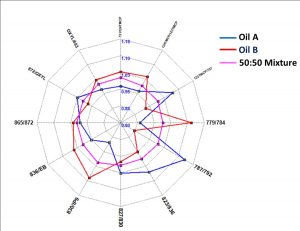One of the best things about working in the petroleum industry is the opportunity to collaborate with so many talented people from a wide variety of technical disciplines. A collaborative approach is key if we are to solve the complex puzzles that nature presents in our quest to find and produce hydrocarbons safely and economically. It may be routine to many of us, but when you step back and think about it, the ability to piece together a detailed understanding of complex three-dimensional systems, many thousands of metres beneath our feet, and then predict how they will behave when we drill into them and let fluids flow, is a fantastic achievement of human technology and cooperation.
Geologists, geophysicists, petrophysicists, reservoir engineers; they all have slightly different perspectives of reality resulting from their different data sets and their own experience. Like the blind men describing an elephant in the famous Indian parable, each can reach erroneous conclusions if they interpret their data in isolation. An accurate picture emerges by combining all the different views. Geochemists might not be considered to be part of a typical core team responsible for managing a subsurface asset, but geochemical analysis can provide insights into reservoir performance and asset integrity that would be difficult or cost-prohibitive to achieve with other methods.

A huge amount of information is encoded in the complex chemical mixture that is petroleum. All the processes that contributed to the generation, migration, trapping and production of a petroleum fluid leave their mark on its chemical composition and isotopic character. These processes can be revealed and reconstructed by geochemical analysis of produced fluids, mud gas or rock samples. Such natural chemical tracers can be used to provide numerous insights into reservoir behaviour, such as identifying the presence of barriers & baffles prior to production, allocating flow to specific intervals without the need for well testing & production logging, or assessing sweep efficiency to augment (or even replace) 4D seismic surveys. A recent paper by van Bergen & Gordon (2018) (1) provides a good overview of the technologies and some links to landmark publications.
Ultimately, reaching a full understanding of the subsurface and our ability to optimise the operational decisions that we take as a result, requires the input of many different disciplines; just as a full description of an elephant in the Indian parable requires the blind men to combine their observations of the individual body parts. Geochemistry provides a viewpoint on the distribution of reservoir fluids and their response to production that is very difficult (or expensive) to achieve by other means.
If you would like to discuss how geochemical fingerprinting might contribute to your reservoir management, please e-mail info@merlinenergy.co.uk.
(1) Pim van Bergen and Marc Gordon (2018) Production geochemistry: fluids don’t lie and the devil is in the detail. From: DOWEY, P., OSBORNE, M. & VOLK, H. (eds) Application of Analytical Techniques to Petroleum Systems. Geological Society, London, Special Publications, 484.



